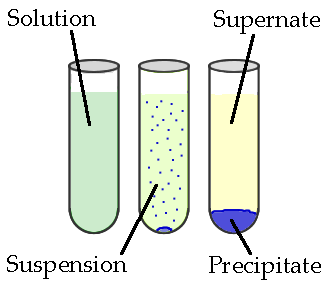Step 1: Diagenesis - Erosion and Transport
After a rock breaks off from its origial source, it becomes a sediment. Sometimes the sediment simply remains where it is. Most of the time the sediment is moved from its original position to a new one. Typically, large fragments are moved downslope via gravity. Smaller fragments are moved via the wind or water. As sediments move further away, the smaller and more rounded the fragment becomes. The processes that do this are collectively known as erosion and transport.
Ions formed during chemical weathering will remain in solution until conditions change. When this occurs, minerals will form and precipitate out of the water.

Image source: